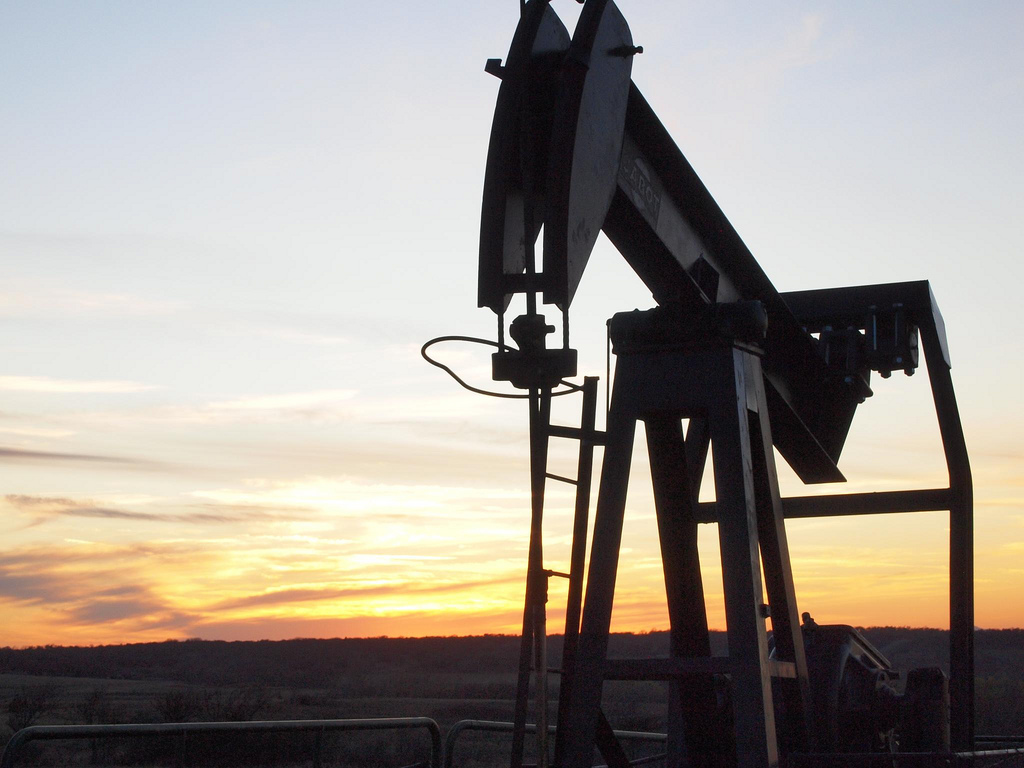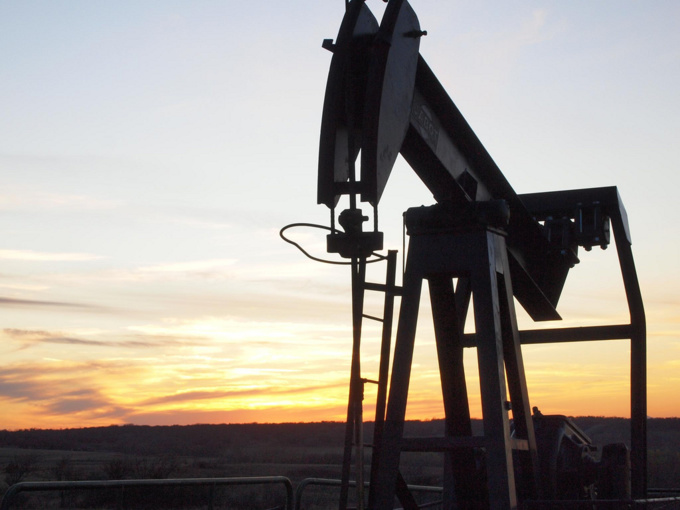Of the 20 largest US oil companies that focus mainly on shale oil, only five were able to get more cash than they spent in the first quarter of 2018, according to an analysis by the Wall Street Journal based on FactSet data.
Oil prices began to recover in 2017, and since then, shale companies have been able to increase oil production in the US to record heights, exceeding 10 million barrels per day, thus competing with Russia and Saudi Arabia.
However, during the first quarter, the 20 largest US companies by market capitalization spent $ 2 billion more than they earned selling oil. They are losing money mainly due to unsuccessful contracts, hedging prices for crude oil, as well as poor logistics, labor shortages and materials, which caused great costs.
The companies spent about $ 1.13 on each earned $ 1 on average in the first quarter, according to FactSet. For example, Oasis Petroleum Inc. spent $ 3.27 on every dollar earned, and Parsley Energy Inc. spent almost $ 2 for each US dollar in cash.
Although many shale operators have positive net income this year, many shareholders have begun to pay more attention to how much companies spend. Investors are trying to get the drillers to live within their means and start to get higher profits.
Hedging played a big role in poor generation of cash flows of shale companies. Striving for stability after many years of sharp fluctuations in crude oil prices, many shale oil companies signed contracts to hedge oil prices in late 2017, which effectively ensured that the shale oil could sell part of its oil in 2018 for $ 50 per barrel.
Now that prices have exceeded $ 70 per barrel, many of the shale companies cannot derive profit from the rally. WPX Energy Inc. reported an adjusted net loss of $ 30 million in the first quarter of 2018. The company itself explains it with a loss of $ 69 million in its hedge contracts due to rising oil prices.
Some companies are already adjusting their strategies because of higher oil prices. Parsley Energy, which targets the Permian shale basin, an oil field in Texas and New Mexico (shale oil production centers), has hedged much of its production in 2018, taking into account high oil prices.
Continental Resources Inc., which develops shale formations in North Dakota and Oklahoma, did not hedge oil production in 2018. As a result, the company earned $ 258 million in cash after deducting expenses in the first quarter and was the best among its competitors.
EOG Resources Inc., the largest oil shale producer in the US, reported a profit of $ 638 million in the first quarter, which grew more than twofold as compared to the previous year. The cash flow exceeded expenditures by $ 110 million for this period. As a result, the shares of EOG Resources Inc. this year grew by about 9%, while oil prices in the US grew by 17%.
According to Wood Mackenzie, if oil prices on stock exchanges in the US remain at around $ 70 per barrel, hedging strategies targeting lower prices in 2017 will result in an average annual decline of 7% in 2018 for six companies focused on the Permian basin.
Investors still generally believe that the productivity of shale companies will improve in 2018 due to rising oil prices and increasing global demand. Yet, ability of the companies to manage their expenses is causing concern. While freight and labor shortages are only beginning to irritate many companies, some costs associated with drilling contractors have increased by 15%. According to analysts, these costs can continue to grow later this year.
Profitability of oil shale companies can also be jeopardized by the rising costs of the huge amount of sand and water needed to extract oil shale.
According to the Rice University's Center for Energy Studies research, at present the production requires 500 tons of steel pipes, amount of water sufficient to fill 35 Olympic pools, and number of wagons with sand, sufficient to fill 14 football fields.
According to James West, analyst at Evercore ISI, many companies will have to choose between production targets and promises to keep investors spending.
source: wsj.com
Oil prices began to recover in 2017, and since then, shale companies have been able to increase oil production in the US to record heights, exceeding 10 million barrels per day, thus competing with Russia and Saudi Arabia.
However, during the first quarter, the 20 largest US companies by market capitalization spent $ 2 billion more than they earned selling oil. They are losing money mainly due to unsuccessful contracts, hedging prices for crude oil, as well as poor logistics, labor shortages and materials, which caused great costs.
The companies spent about $ 1.13 on each earned $ 1 on average in the first quarter, according to FactSet. For example, Oasis Petroleum Inc. spent $ 3.27 on every dollar earned, and Parsley Energy Inc. spent almost $ 2 for each US dollar in cash.
Although many shale operators have positive net income this year, many shareholders have begun to pay more attention to how much companies spend. Investors are trying to get the drillers to live within their means and start to get higher profits.
Hedging played a big role in poor generation of cash flows of shale companies. Striving for stability after many years of sharp fluctuations in crude oil prices, many shale oil companies signed contracts to hedge oil prices in late 2017, which effectively ensured that the shale oil could sell part of its oil in 2018 for $ 50 per barrel.
Now that prices have exceeded $ 70 per barrel, many of the shale companies cannot derive profit from the rally. WPX Energy Inc. reported an adjusted net loss of $ 30 million in the first quarter of 2018. The company itself explains it with a loss of $ 69 million in its hedge contracts due to rising oil prices.
Some companies are already adjusting their strategies because of higher oil prices. Parsley Energy, which targets the Permian shale basin, an oil field in Texas and New Mexico (shale oil production centers), has hedged much of its production in 2018, taking into account high oil prices.
Continental Resources Inc., which develops shale formations in North Dakota and Oklahoma, did not hedge oil production in 2018. As a result, the company earned $ 258 million in cash after deducting expenses in the first quarter and was the best among its competitors.
EOG Resources Inc., the largest oil shale producer in the US, reported a profit of $ 638 million in the first quarter, which grew more than twofold as compared to the previous year. The cash flow exceeded expenditures by $ 110 million for this period. As a result, the shares of EOG Resources Inc. this year grew by about 9%, while oil prices in the US grew by 17%.
According to Wood Mackenzie, if oil prices on stock exchanges in the US remain at around $ 70 per barrel, hedging strategies targeting lower prices in 2017 will result in an average annual decline of 7% in 2018 for six companies focused on the Permian basin.
Investors still generally believe that the productivity of shale companies will improve in 2018 due to rising oil prices and increasing global demand. Yet, ability of the companies to manage their expenses is causing concern. While freight and labor shortages are only beginning to irritate many companies, some costs associated with drilling contractors have increased by 15%. According to analysts, these costs can continue to grow later this year.
Profitability of oil shale companies can also be jeopardized by the rising costs of the huge amount of sand and water needed to extract oil shale.
According to the Rice University's Center for Energy Studies research, at present the production requires 500 tons of steel pipes, amount of water sufficient to fill 35 Olympic pools, and number of wagons with sand, sufficient to fill 14 football fields.
According to James West, analyst at Evercore ISI, many companies will have to choose between production targets and promises to keep investors spending.
source: wsj.com



















